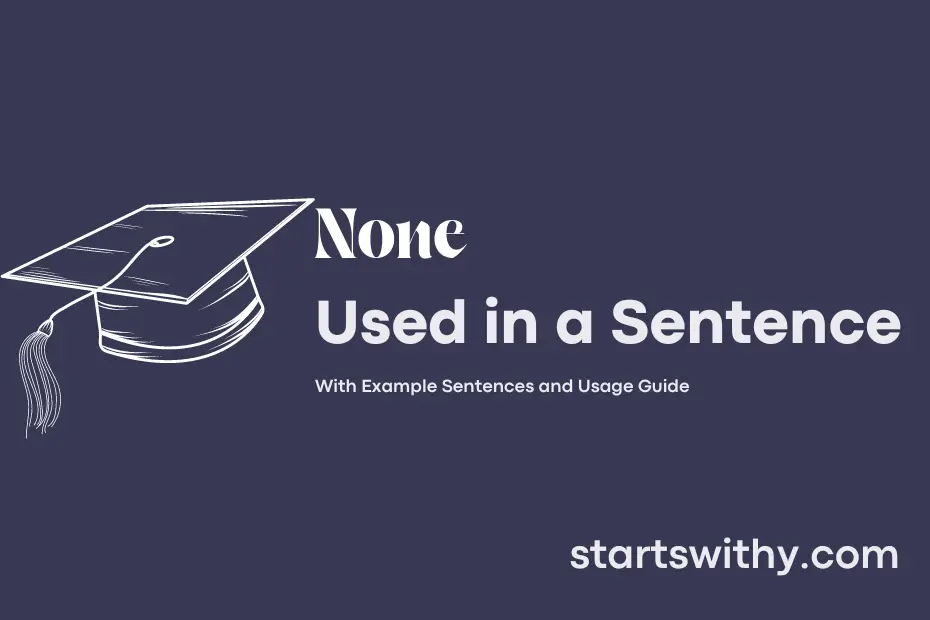Have you ever pondered the concept of “none” in sentences? In linguistics, “none” is a pronoun used to indicate the absence of something or to negate the existence of a quantity.
When we use “none” in a sentence, we are emphasizing the lack of a particular item, person, or action. It plays a crucial role in establishing contrast, signaling emptiness, or conveying a sense of zero presence. Let’s explore the various ways “none” can be effectively incorporated into different types of sentences.
7 Examples Of None Used In a Sentence For Kids
- None of the birds are flying in the sky.
- I have none of the red crayons left in my box.
- There are none of the stars out today.
- I have none of the yellow blocks to build with.
- None of the flowers in the garden are blooming right now.
- I have none of the green markers for coloring.
- There are none of the butterflies in the garden today.
14 Sentences with None Examples
- None of the students completed their assignment on time.
- The professor provided none of the hints for the upcoming exam.
- None of the books in the library were available for loan.
- The cafeteria had none of the food items I wanted for lunch.
- None of the students attended the optional lecture.
- The college club received none of the funding they requested.
- I have none of the study materials for the upcoming test.
- None of the professors were available for office hours today.
- There were none of the parking spots available near the college entrance.
- None of the group members contributed to the project presentation.
- The college bookstore had none of the textbooks I needed for my classes.
- None of the students were prepared for the surprise quiz.
- The college cafeteria served none of the vegetarian options today.
- None of the students were interested in joining the study group.
How To Use None in Sentences?
To use “None” in a sentence, it is important to understand its meaning and function. None is a pronoun that means “not any” or “no one” and is used to indicate the absence of something or someone. When using None in a sentence, it is typically followed by a singular verb if the reference is to something singular or by a plural verb if the reference is to something plural.
Example sentences using None:
– None of the students was able to answer the difficult question. (singular)
– I checked the fridge, but none of the leftovers were still good to eat. (plural)
It is important to note that None is used when the emphasis is on the absence or lack of something. It should not be confused with “no one,” which refers to no person. None can be used in both formal and informal writing and is a versatile word that can be used in various contexts.
In summary, when using None in a sentence, ensure that it agrees with the verb in terms of singular or plural form based on the context of the sentence. By understanding the meaning and function of None, you can effectively communicate the absence or lack of something in your writing.
Conclusion
In English grammar, sentences with “none” can take different forms, including those with singular or plural verbs depending on the context. When “none” is followed by a singular noun, it typically takes a singular verb. For example, “None of the cake was left” uses a singular verb because “cake” is singular. Conversely, when “none” is followed by a plural noun, it usually takes a plural verb. For instance, “None of the books were missing” uses a plural verb because “books” is plural.
Understanding how “none” functions in sentences is crucial for maintaining subject-verb agreement. By recognizing whether the noun following “none” is singular or plural, you can ensure that your sentence is grammatically correct. By following these guidelines, you can avoid common errors related to subject-verb agreement in sentences with “none.”



